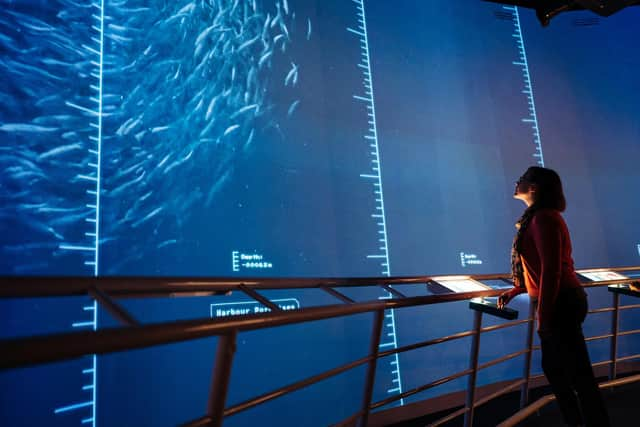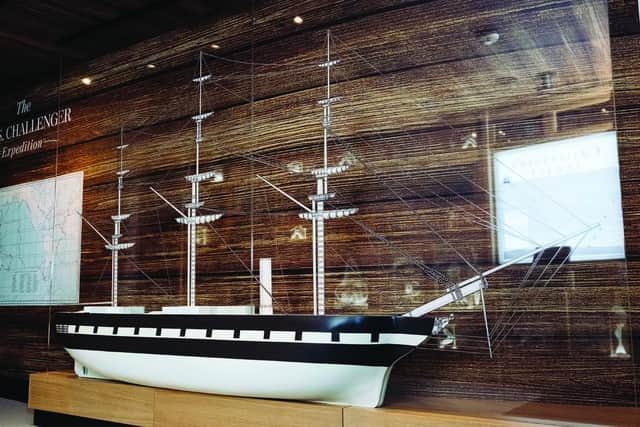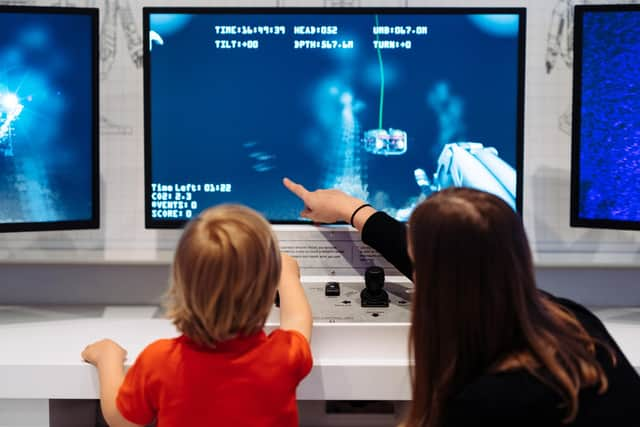Sustainable Scotland: Scottish museum goes deeper on down with addition of new £1m ocean exhibition
Discover the Deep, a cutting-edge showcase of marine science and exploration, opens at Dynamic Earth in Edinburgh this week and will form part of its permanent collection.
The interactive experience takes visitors on their own journey beneath the waves, highlighting the history of deep-ocean exploration and what is happening right now in the darkest depths off the coast of Scotland.
Advertisement
Hide AdAdvertisement
Hide AdIt will also shine a light on Scotland’s own pioneering researcher and ‘father of marine science’ Sir Charles Wyville Thomson, whose discoveries in the 1800s remain important to this day.
It has been designed to not only inspire people with the “magnificence” of deep-water habitats in Scotland and across the globe, but also to highlight the threats facing the marine environment and the wildlife which depends on it.
It includes models, displays and hands-on experiences, with state-of-the-art technology throughout and activities for all ages.
The exhibition is split into four different zones: Our Connected Ocean, The Pioneers of Oceanography, Scotland’s Underwater World and Exploring the Deep.
In one section, visitors can dive into the underwater world via a spectacular giant movie screen.


The film takes them hundreds of metres below the surface of the sea, exploring the cold-water coral reefs and myriad sealife of Scotland’s deep.
Another area features a model of HMS Challenger, the ship used by Sir Charles Wyville Thomson on his famous Challenger Expedition 150 years ago.
People can explore some of the techniques used by the crew, as well as some of the specimens collected during the voyage that still play an important role in marine science to this day.


Advertisement
Hide AdAdvertisement
Hide AdThe final part of the exhibition looks at modern research techniques, with a variety of interactive stations allowing visitors to find out about marine acoustics, seabed mapping, deep-sea technology, microplastics and pressures on the deep ocean such as mining.
Working scientists Blair Easton, from St Abbs Marine Station, Professor Bhavani Narayanaswamy, from the Scottish Association for Marine Science, and Nadia Jogee, from the University of Edinburgh, are introduced through videos, explaining their current research and how it is addressing pressing issues facing the marine environment.
A new presenter-led planetarium show, ‘Under Pressure: The Ocean Show’, has been created to complement the new exhibition.
The film plunges into the deep to explore dark, hidden ecosystems and show the collective efforts of hundreds of marine scientists and engineers striving to learn all they can about these mysterious and little-explored worlds.


Featuring new technology and cutting-edge software, viewers are immersed in surround-sound, with fully digital 360° screens and pin-sharp 6K resolution.
Dr Hermione Cockburn, scientific director at Dynamic Earth, said: “We’re thrilled to open our brand-new exhibition, Discover the Deep, which is the biggest investment we’ve had at the centre since 2014.
“At a time when the health of the ocean is in steep decline, it’s vital that people feel a connection to the marine environment and understand how important it is to our future.
“We hope the new exhibition will inspire visitors by revealing wonderful deep-sea habitats just off the coast of Scotland, as well as the central role Scottish scientists have played and continue to play in how we understand it.
Advertisement
Hide AdAdvertisement
Hide Ad“We hope it prompts an interest, or even a passion, for the ocean, along with an understanding of what we can all do to protect it.
“Discover the Deep, and the wider science engagement and outreach programme that goes with it, is a result of five years’ work collaborating with scientists across the country to tell the story of Scotland’s deep-sea, and we can’t wait to see how visitors respond to it.”
The £1 million exhibition was made possible by major funding from the National Lottery Heritage Fund and other trusts, foundations and private donors.
Regular Dynamic Earth features remain – including the ever-popular real iceberg, a bone-shaking earthquake and the Deep Time Machine, which takes visitors billions of years back in time.
Comments
Want to join the conversation? Please or to comment on this article.
